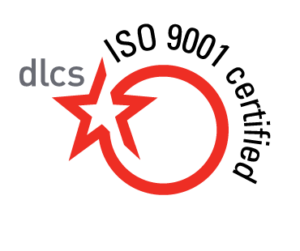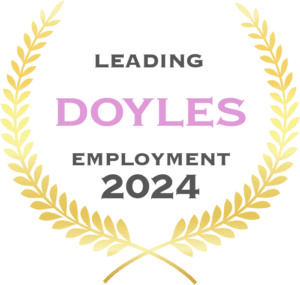
The Professional Employees Award 2020 is a key legal instrument defining the employment conditions of certain professional employees in Australia. The Professional Employees Award primarily covers employers and defined employees engaged in industries like Information Technology, Medical Research, Quality Auditing or Telecommunications Services.
This article aims to simplify the complexities of this award, ensuring a comprehensive understanding of its terms and conditions.
Award Coverage and Scope of the Professional Employees Award 2020
The Professional Employees Award encompasses businesses primarily active in sectors like information technology, medical research, quality assurance, and telecommunications, as well as their staff who meet the award’s criteria.
Additionally, professionals in engineering and science are included, unless a different award that better matches their job classification applies to their employer.
In the context of this award:
- The Information Technology industry involves activities like computer design, production, and software creation, and services related to computer maintenance, consultancy, programming, system analysis, and the development and management of online infrastructures.
- The medical research industry refers to non-profit entities focused on professional scientific duties and various types of research, all aiming at diagnosing, curing, preventing, or treating diseases.
- The quality auditing industry in this context is about offering consultancy, auditing, and evaluation services to firms aiming to adhere to the International Standards Organisation’s quality benchmarks.
- The telecommunications services industry includes the provision, installation, or upkeep of telecommunication services and related tasks, and the maintenance of telecommunication devices and connections.
When discussing professional engineering duties and science roles, these typically demand formal education or a similar level of experience.
To illustrate, employees covered by the Professional Employees Award include, the following:
- Engineers, scientists, and IT professionals with degrees
- IT specialists eligible for certification by the Australian Computer Society based on their qualifications and experience
- Engineers and scientists qualified to join professional organisations like Engineers Australia or the Royal Australian Chemical Institute
- Medical research professionals with relevant qualifications and a background in the field
- Quality assurance auditors with the necessary educational and experiential background
The award also extends to staffing agencies and their employees operating within these sectors or roles.
Note: An employer or employee already covered by a more fitting award classification may not fall under the jurisdiction of the Professional Employees Award. For example, an administrative assistant working in an IT company might be covered by the Clerks Private Sector Award, thereby exempting them from the provisions of the Professional Employees Award.
Exemptions from the Professional Employees Award
Certain occupations and sectors are exempt from the coverage of the Professional Employees Award. These typically include:
- Managerial positions
- Administrative or clerical roles
- Sectors that have their own specific award, such as:
- Airports
- Black Coal
- Rail
- Electrical Power
- Nursing
- Port Authorities
- State Government
- Water
Employment Types Under the Award
The Professional Employees Award stipulates conditions for three categories of employment, namely full-time, part-time, and casual.
| Employment Type | Description | Key Features |
| Full-Time Employees | Standard form of engagement under the Award, applicable to those not classified as part-time or casual. | Average of 38 hours per week.Entitled to all benefits: annual leave, sick leave, and public holiday pay. Set working hours and days, often Monday through Friday. |
| Part-Time Employees | Engaged for a specified number of hours less than the average 38 hours per week. | Specified hours are less than 38 per week. Entitlements on a pro-rata basis.Regular pattern of hours agreed upon with the employer. |
| Casual Employees | Paid on an hourly basis with certain loadings and flexibilities. | Payments include a loading of 25% of the rate. Compensated for at least two consecutive hours of attendance.Flexibility in work hours and days. No paid annual or sick leave, but compensated by loading. |
Request for Casual Conversion
Under the Professional Employees Award 2020, the “Request for Casual Conversion” provision allows eligible casual employees to request a conversion to full-time or part-time employment. This is based on certain criteria and conditions, including the following:
- Eligibility: A casual employee is typically eligible to request a conversion if they have been working a regular pattern of hours on an ongoing basis for a specified period (e.g., 12 months) with the same employer.
- Process: The request for conversion must be made in writing to the employer. The employer, in turn, must provide a written response within a certain timeframe, either agreeing to or refusing the request. If refusing, the employer must provide valid reasons based on facts.
- Refusal Grounds: An employer can refuse a request only on reasonable grounds. This might include foreseeable changes in the coming period that would require a reduction in the employee’s hours, or if the casual position ceases to exist.
- Benefits: If a casual employee’s request for conversion is approved, they will transition to full-time or part-time employment and will be entitled to the benefits and conditions applicable to that employment type.
Work Hours under the Professional Employees Award 2020
The Professional Employees Award outlines the ordinary hours of work, defined as 38 hours per week in line with the National Employment Standards (NES).

Ordinary Hours of Work
If an employee has an agreement with their employer to work a varied schedule, their average weekly hours over that cycle should not exceed 38.
Employers are required to compensate employees for any time worked beyond these standard hours, including on-call duties, remote tasks, and shifts outside regular hours.
Additionally, if an employee is permanently shifted from day work to shift work or vice versa, they should be given at least a month’s notice, unless a different agreement is reached. Any changes to work schedules or rosters must be discussed and consulted upon.
Wages and Allowances
The Professional Employees Award prescribes minimum rates and payments of wages, along with various allowances and superannuation details.
Minimum Rates
The Professional Employees Award establishes minimum annual wages for full-time employees, depending on their classification. These wages translate into minimum hourly rates, with the specifics outlined in the Award.
Each year, Fair Work makes adjustments to both the National Minimum Wage and the Award minimum wage.
For insights into the pay conditions specific to the industry, consult the Pay Guide for the Professional Employees Award 2020. You can also access the Award for a detailed look at the minimum rates across various classifications.
Allowances
The Professional Employees Award details various allowances that employers are required to pay over and above their wage. The allowances generally apply to specific work conditions or specialised skills:
| Allowance | Description |
| Travel expenses and travel time | Employees get reimbursed for travel expenses when on company business. Compensation for extra travel time is negotiable. |
| Vehicle allowance | If employees use their private vehicle for work, according to a mutual agreement, they get paid a “per kilometre” rate. |
| Equipment and special clothing | The company provides the necessary equipment and clothing unless the employee chooses otherwise. These items remain company property. |
Adjustment of Expense-Related Allowances
The value of these allowances is adjusted based on annual wage reviews and the applicable index figure from the Australian Bureau of Statistics.
Superannuation
The Award makes provision for superannuation contributions in accordance with super guarantee laws.
The Superannuation Guarantee (SG) is a mandatory contribution system established by the Australian government to ensure that employers contribute to the retirement savings of their employees.
As of July 2023, the SG rate is set at 11% of an employee’s ordinary time earnings. This means that employers are required to contribute 11% of an employee’s regular wages (excluding overtime) into a superannuation fund.
The Australian government has planned gradual increases to the SG rate. The goal is to raise the rate to 12% by 2025.
Employers under the Professional Employees Award who fail to make the required contributions by the quarterly deadline may be liable for the Superannuation Guarantee Charge, which includes the SG shortfall amounts, interest, and an administration fee.
Leave and Public Holidays under the Professional Employees Award 2020
The Professional Employees Award provides for various types of leave and public holidays in line with the NES.
Annual Leave
Annual leave under the Professional Employees Award follows the NES.
Full-time and part-time employees under the NES are entitled to four weeks of paid annual leave for each year of service with their employer. This leave accrues progressively during a year of service according to the employee’s ordinary hours of work and accumulates from year to year.
When taking annual leave, employees receive a loading calculated at 17.5% of their base rate of pay. This loading is designed to compensate for the employee’s loss of the opportunity to work overtime or earn other allowances that they might have received had they been working.
If an employee doesn’t use all of their annual leave, it accumulates and carries over to the next year. This accumulated leave can be taken in the future or, in some cases, paid out upon termination of employment.
Annual Leave Considerations
| Section | Key Points |
| Temporary Shutdown | Employers can shut down operations for annual leave.Must give 28 days’ notice, or shorter if agreed. New employees must be informed as soon as possible.Employers can direct employees to take accrued annual leave. Directions must be in writing and reasonable. |
| Annual Leave in Advance | Employer and employee can agree on taking leave before it’s accrued. The agreement must state the amount of leave and start date.If leave taken hasn’t been accrued by termination, the employer can deduct the amount. |
| Cashing Out of Annual Leave | Leave can be cashed out with a written agreement. Payment must be equivalent to what would be received if leave were taken. A maximum of two weeks can be cashed out in a year. |
| Excessive Leave Accrual | Excessive leave is more than 8 weeks (or 10 for shiftworkers). Employers or employees can initiate discussions to reduce excessive leave. Employers can direct employees to take leave if no agreement is reached.An employee can request to take leave if no agreement is reached. |
Other Types of Leave
Apart from annual leave, the Professional Employees Award also provides for:
| Type of Leave | Description | Key Features |
| Personal/carer’s Leave | Time off due to personal illness or injury or to care for a family member. | Typically, 10 days accrue per year |
| Compassionate Leave | Leave for the death, life-threatening illness, or injury of a family member. | Generally, two days per occasion and can be taken consecutively or separately. |
| Parental Leave and Related Entitlements | Leave for birth, adoption, or surrogacy. | Up to 12 months of unpaid leave, but there is the possibility of requesting an additional 12 months. |
| Community Service Leave | Leave for community service activities. | Includes unpaid leave for voluntary emergency activities and paid leave for up to 10 days of jury duty. |
| Family and Domestic Violence Leave | Leave for dealing with the impact of family or domestic violence. | 5 days of unpaid leave per year. |
Public Holidays
The Professional Employees Award applies the NES for public holidays, ensuring employees are entitled to a day off on a public holiday, paid at the base pay rate for the ordinary hours that would have been worked.
Individual Flexibility Arrangements
Unlike some other awards, the Professional Employees Award doesn’t provide specific provisions for the span of hours, breaks between shifts, overtime or penalty payments and detailed guidelines on shift rotations. It does, however, make provision for employers and employees to mutually agree to these provisions and to change certain award terms to better suit their needs.
These terms include:
- Work schedules
- Overtime pay rates
- Penalty rates
- Allowances
- Annual leave loading
Note: The changes can’t be less favourable than the provisions under the award. And any agreement made must be genuine, without any force or pressure.
Key Takeaways
The Professional Employees Award 2020 is a comprehensive legal document outlining the minimum rights, responsibilities, and entitlements of classes of professional employees in Australia. While it may seem complex, understanding its key provisions can greatly benefit both employers and employees.
Remember, this article is a guide and not a substitute for professional legal advice. If you’re uncertain about your obligations or entitlements under the Professional Employees Award, consider seeking professional legal counsel.
The lawyers at WilliamsonBarwick have extensive experience advising on the Professional Employees Award and can assist you in fully understanding your obligations as an employee or employer. They can also support you in resolving any conflicts or issues that may arise under the award.
Don’t risk non-compliance; contact us today to discuss your specific needs.











